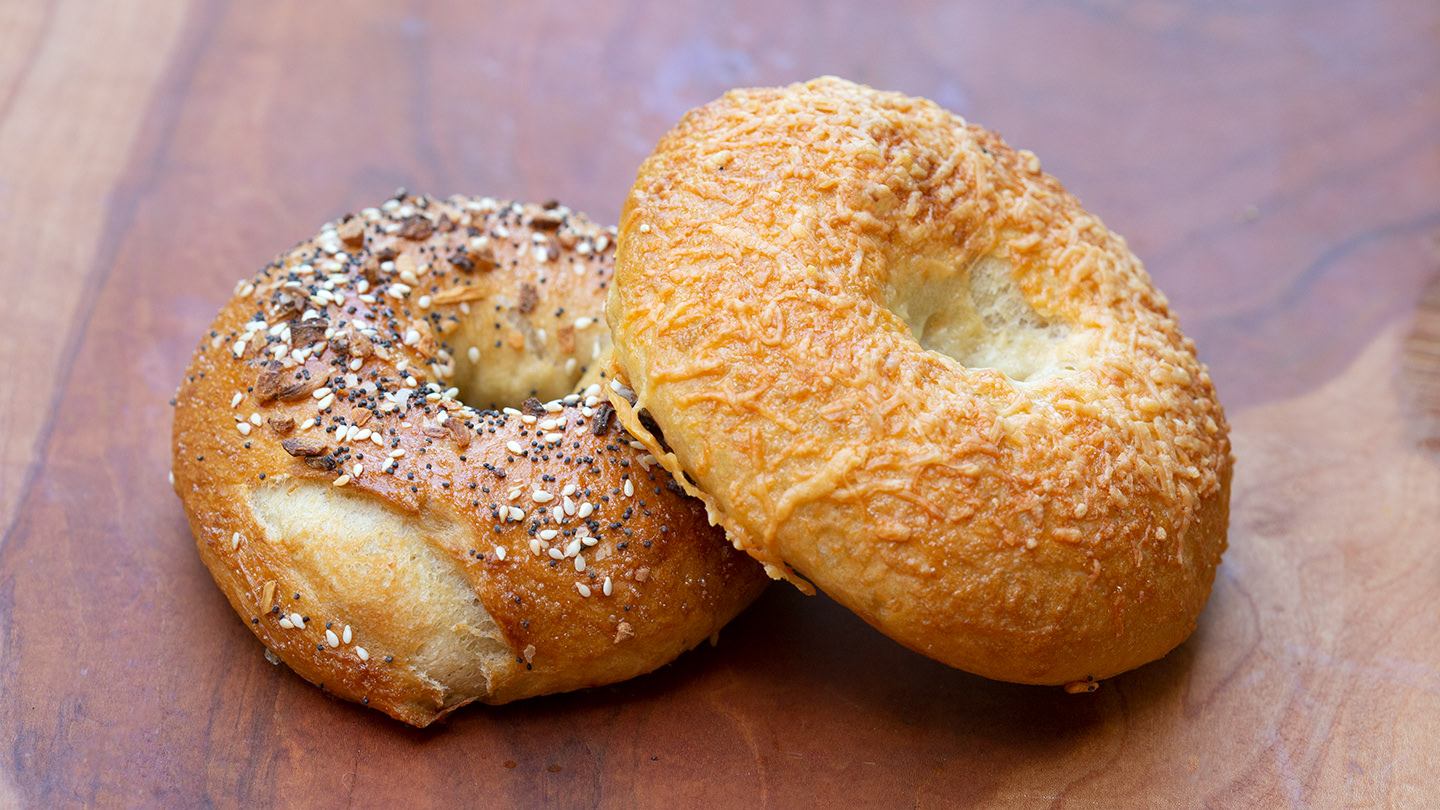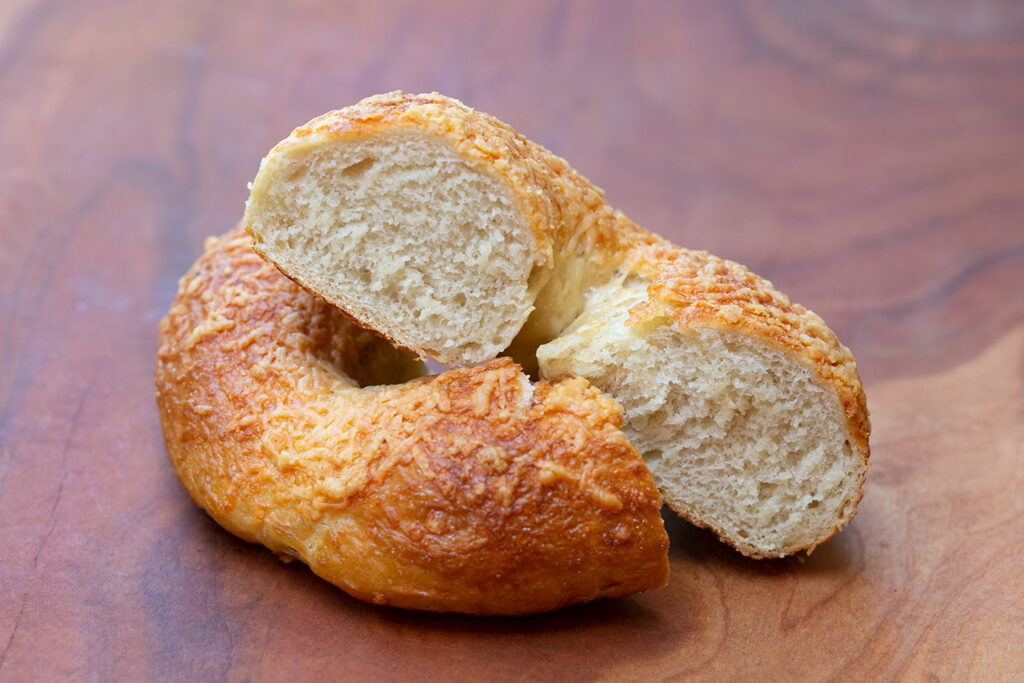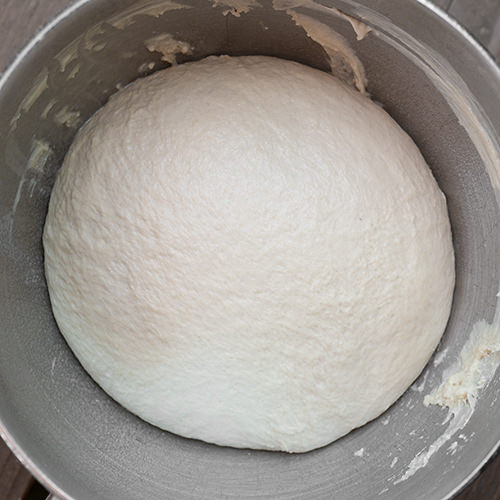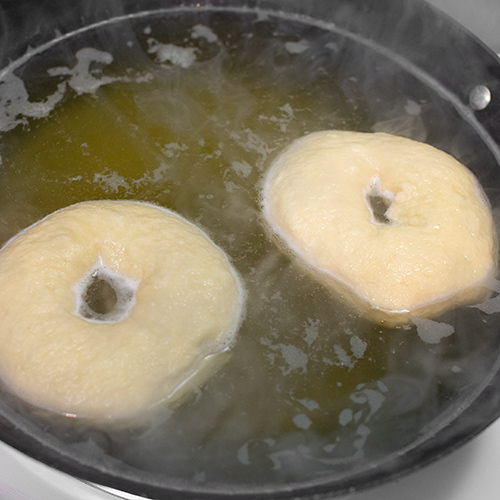How to Create Handmade Artisan Bagels that Will Impress Even the Harshest Critics!

I worked long and hard coming up with an Artisan bagel recipe. I have eaten bagels just about everyday for the last 30 years. If you are looking for a quick and easy recipe, this is not for you. The key to this bagel is the flavor, and it takes time to achieve the taste. I am going to give you the overnight and and 48 hour recipe. It really does not take a lot of time, just resting time working its magic in the refrigerator. If you would like a more traditional style, replace the bread flour with all-purpose flour. Above are an everything artisan bagel, and a Asiago artisan bagel. I hope you enjoy the recipe, and feel free to share with friends.
Artisan Bagels
The bagel is a popular bread product with a long and interesting history. Its exact origin is still a topic of debate among historians, but it is widely believed to have originated in Jewish communities in Poland in the 14th century. The word “bagel” is derived from the Yiddish word “beygel,” which itself comes from the Middle High German word “bouc,” meaning ring or bracelet.
Initially, bagels were made as a form of bread to be eaten during Jewish Sabbath and other religious occasions. The round shape of the bagel is said to symbolize eternity or the unity of the Jewish community. The hole in the center may have practical origins, allowing for easier storage on dowels or strings.
Bagels gained popularity within the Jewish communities and gradually spread throughout Eastern Europe. They became a staple food, cherished for their chewy texture and portability. As Jewish immigrants migrated to different parts of the world, they brought their bagel-making traditions with them.
In the late 19th and early 20th centuries, Jewish immigrants brought bagels to the United States, particularly to cities like New York, where they became an integral part of Jewish cuisine. In New York, bagel-making techniques were further refined, resulting in the iconic New York-style bagel known for its dense, chewy interior and shiny, slightly crispy exterior. The introduction of steam ovens played a significant role in achieving this unique texture and appearance.
Over time, bagels transitioned from being primarily a Jewish food to a more mainstream delight. In the mid-20th century, bagel bakeries started appearing across the United States, catering to a growing customer base. Bagel sandwiches, especially the classic combination of lox (smoked salmon) and cream cheese, gained popularity among non-Jewish consumers as well.
As international travel and culinary exploration expanded, the bagel reached different parts of the world. It became a global phenomenon, adapting to various local tastes and preferences. In different countries, the bagel took on new flavors, toppings, and shapes. For example, in Japan, sweet and colorful versions of bagels became popular, while in Eastern Europe, bagels topped with spices, seeds, and onions are favored.
In recent years, the bagel has experienced a resurgence in popularity, thanks to creative artisanal bakers and innovative food entrepreneurs. From rainbow-colored bagels to gourmet fillings and unique flavor combinations, the bagel has undergone a modern reinvention, captivating food enthusiasts and social media alike.
Today, the Artisan bagel remains a beloved staple in many cultures, enjoyed in various forms and flavors. Whether you prefer a traditional plain bagel or a contemporary creation, the bagel continues to evolve while retaining its timeless appeal as a delightful and versatile bread product.

Asiago Cheese Artisan bagel
Steps to make Artisan bagels






Ingredient of the Day- Active dry yeast
Active dry yeast is a type of yeast commonly used as a leavening agent in baking. It consists of dormant yeast cells that have been dried and granulated. The drying process removes the moisture from the yeast, allowing it to be stored for extended periods and activated when needed.
To use active dry yeast, it needs to be rehydrated and activated before incorporating it into the dough. This is typically done by dissolving the yeast in warm water (around 105°F to 110°F or 40°C to 43°C) along with a small amount of sugar. The warm water and sugar mixture provides an ideal environment for the yeast to wake up and start fermenting.
Once the yeast is activated, it begins to consume the sugar and produce carbon dioxide gas, which creates bubbles in the dough, causing it to rise. This process is known as fermentation and is responsible for the light and airy texture in bread and other baked goods.
Active dry yeast has a longer shelf life compared to fresh yeast since the drying process preserves its viability. It is widely available in grocery stores and is a convenient option for home bakers. However, it typically requires proofing or rehydration before use, which involves waiting for the yeast to activate and produce foam before adding it to the other ingredients.
It’s important to note that active dry yeast and instant yeast (also known as rapid-rise or quick-rise yeast) are not the same. Instant yeast is formulated to be used directly without proofing and is more finely granulated, allowing for faster and more immediate fermentation.
When using active dry yeast in recipes, it is essential to follow the instructions provided and pay attention to the required proofing time and temperature. Proper activation of the yeast ensures optimal rising and a successful baking outcome.
Joke of the Day!
“Why did the carrot break up with the potato? It could not handle the couch-potato lifestyle!”

JOIN US!
SUBMIT YOUR OWN RECIPE
We Would love to hear from you
We would love to hear from you. What is your favorite holiday recipe? Let us know in the comments below. If you have a recipe you think is amazing, feel free to submit it with link below.

